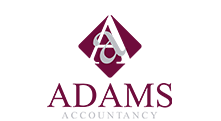How pensions tax allowances can significantly reduce your tax bill in 2024/25

Who doesn’t want to pay less tax? Using a tax-efficient strategy around pensions you can reduce your tax bill significantly. However, you might find it tricky to get your head around how pensions work. You can maximise your retirement pot for the future while reducing your tax using the pensions tax. Let’s explore how you can make better decisions about your pension strategy.
Understanding Pensions Tax Allowances
The pensions annual allowance is the amount you can contribute to your pension each year and receive tax relief. For 2024-25, the maximum tax-free contribution is £60,000 (up from £40,000 in 2023/24). If you contribute over £60,000 per year, you could incur a tax charge (unless you have carry forward allowances – see below.)
The allowance includes all pension contributions made by you and your employer, ensuring that every pound saved is working efficiently towards your retirement. If you have already started to access your pension, you are limited to £10,000 of new tax-free contributions each year.
What is the pensions lifetime allowance?
Since this tax year (2024-25) there is no longer a pensions lifetime allowance. The limit of £1,073,100 was the maximum total amount you could save into your pension pot and still get tax relief. With the removal of the lifetime allowance, two new allowances are introduced – the Individual’s Lump Sum Allowance (LSA) and the Individual’s Lump Sum and Death Benefit Allowance (LSBDA). These allowances aim to limit the total amount of tax-free lump sums that individuals can receive from their pension savings.
Why Small Business Owners Should Pay Attention
Limited company owners can save significant tax by making pension savings. Contributions made by your company are treated as an allowable business expense which reduces your corporation tax bill. So, by making pension contributions, you are receiving tax relief and reducing your in-year tax bill. In addition, you’ll get tax relief on those contributions at your highest marginal rate, enhancing the overall tax efficiency of your pension strategy. For other suggestions on how to reduce Corporation tax, see our blog ’12 Ways to reduce your corporation tax bill in 2024’.
Leveraging Employer Contributions
One of the most effective ways to use pensions tax allowances is through employer contributions. You can decide on the amount your company contributes to your pension (up to the annual maximum). These contributions are deducted before corporation tax, reducing your taxable profits and providing a win-win situation. By maximising employer contributions, you ensure that you’re fully benefiting from the available tax relief, making your retirement savings strategy both effective and efficient.
What are Self-Invested Personal Pensions (SIPPs)
A Self-Invested Personal Pension (SIPP) offers greater flexibility and control over your pension investments compared to traditional pension schemes. You can invest in a wide range of assets, including stocks, bonds, funds and commercial property.
It’s great to have this level of flexibility so you can tailor your investment strategy for your risk appetite and to your retirement goals. Contributions to a SIPP still attract the same tax relief, making it a tax-efficient way to save for your future while having more control over your investments.
Using Pension Carry Forward Rules
If you haven’t used your full annual allowance in the past three tax years, you can carry forward these unused allowances to the current tax year. This strategy can significantly increase the amount you can contribute to your pension in a single year. It can be helpful as a tax-efficient way to extract money from your company if you’ve had a particularly profitable year. However, make sure any carry forward contributions are within your earnings limit to avoid unnecessary tax charges. Planning your contributions strategically can help you make the most of these carry forward rules.
Regular Reviews
As with any financial planning, it needs to be reviewed regularly. As your business grows, you may find additional opportunities to increase your contributions, aligning them with your higher income and profit levels. Additionally, having a regular review of your investment portfolio within a SIPP can help you stay on track with your retirement goals. It can be challenging to keep on top of market changes, so using a financial advisor to provide valuable insights can help you optimise your pension strategy for maximum tax efficiency and growth.
How Adams Accountancy Can Improve Your Tax Strategy
Understanding and using pensions tax allowances is essential for limited company business owners who want to improve tax efficiency and enhance their pension savings. By making informed decisions about private pension contributions, leveraging employer contributions, exploring SIPPs, and strategically using carry forward rules, you can maximise your pension savings while benefiting from significant tax relief. A proactive approach to building your pension pot can lead to substantial long-term benefits, making it a key component of your overall financial planning, so give us a call on 01322 250 001 or complete our online contact form today to find out more.


